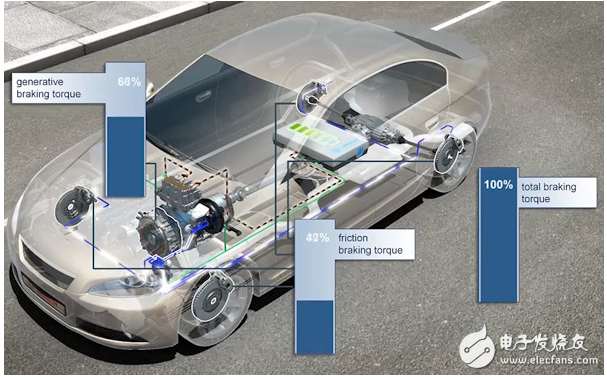
资料下载

能量收集在汽车应用中利用多种来源
能量收集在汽车应用中利用多种来源
车辆提供了各种各样的环境能量来源,足以提供低功率传感器甚至许多执行器。虽然电动汽车捕捉动能再生制动充电电池组,传统的动力车可以利用可用的热,振动和太阳能利用广泛的可用的传感器和专门的ICS阵列。
能量收集技术为汽车、卡车和任何类型的车辆提供不同的系统和附加装置提供了潜力。除了增加新功能的能力外,能量收集还可以减去车辆重量和成本的相当大的组成部分。具体来说,消除甚至减少线束的能力意味着更轻的重量和更简单的车辆物理设计,从而转化为更高的性能、更低的成本和更大的设计灵活性。
对于电动汽车来说,能量收集的重点仍然是改进主牵引传动和充电电池的方法。利用其他形式的能源收集有助于电动汽车的经济性。电动汽车中的一次牵引电池可以占到车辆成本的一半,所以利用更多的环境能源的能力可以使更多的电池充电。

Electric vehicles can recover substantial amounts of energy from the vehicle‘s kinetic energy through the braking system, suspension, and shock absorbers. Among these methods, braking remains the primary source of energy harvesting in currently available vehicles. In response to higher-level speed-control algorithms, advanced algorithms in drive-motor controllers generate the appropriate three-phase voltage and current waveforms to produce the required torque in the drive motors to gradually slow the vehicle. Besides decreasing wear on brakes, the resulting back EMF generates energy used to recharge the battery, resulting in a regenerative braking effect.
As the driver further depresses the brake pedal to bring the vehicle to a complete stop, friction braking produces additional energy able to charge the traction battery. More advanced vehicles combine both methods to maximize energy harvesting from the vehicle’s kinetic motion. In these vehicles, controllers coordinate regenerative braking and friction braking, shifting from 100 percent regeneration to 100 percent friction braking, depending upon how far and hard the brake pedal is depressed (Figure 1).
声明:本文内容及配图由入驻作者撰写或者入驻合作网站授权转载。文章观点仅代表作者本人,不代表电子发烧友网立场。文章及其配图仅供工程师学习之用,如有内容侵权或者其他违规问题,请联系本站处理。 举报投诉
- 相关下载
- 相关文章







